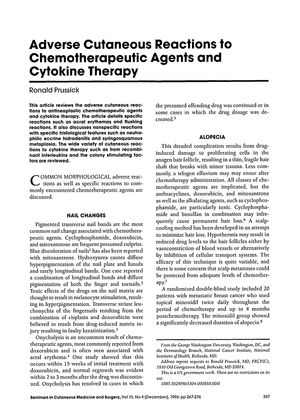TLDR Chemotherapy and cytokine therapy can cause various skin reactions, including hair loss and hypersensitivity.
The 1996 document reviewed adverse skin reactions caused by chemotherapeutic agents and cytokine therapy. It detailed specific reactions like acral erythemas, flushing, and nonspecific reactions with histological features such as neutrophilic eccrine hidradenitis. Pigmented transverse nail bands were common with chemotherapy, and alopecia was a feared side effect, particularly from anthracyclines and alkylating agents. A study with 20 patients showed that topical minoxidil could significantly decrease the duration of chemotherapy-induced alopecia. Hydroxyurea was linked to various skin reactions including alopecia, while L-Asparaginase had a high risk of hypersensitivity reactions, which could be mitigated with glucocorticoids. Taxol had a 10% risk of hypersensitivity, often due to its solubilizing agent. Suramin caused skin reactions and keratoacanthomas, some with HPV type 18. Preservatives and stabilizers in drugs could also cause hypersensitivity, indicating a need for alternative formulations. Cytokine therapy was associated with skin reactions like alopecia, erythema, and exacerbation of conditions like psoriasis. The document also noted that rIL-2 therapy could lead to autoimmune diseases and that rIL-3 could cause facial flushing and hemorrhagic eruptions. It did not specify the number of people in the study, as it was a review of multiple cases and studies.
 127 citations
,
July 1996 in “Journal of The American Academy of Dermatology”
127 citations
,
July 1996 in “Journal of The American Academy of Dermatology” Minoxidil shortens baldness from chemotherapy by 50.2 days without significant side effects.
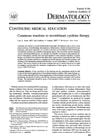 105 citations
,
September 1995 in “Journal of The American Academy of Dermatology”
105 citations
,
September 1995 in “Journal of The American Academy of Dermatology” Recombinant cytokine therapy can cause skin reactions ranging from mild to severe.
 25 citations
,
July 1994 in “Archives of Dermatology”
25 citations
,
July 1994 in “Archives of Dermatology” A man's skin condition, pemphigus vulgaris, came back after he was treated with interleukin 2 for cancer.
 45 citations
,
January 1992 in “Dermatology”
45 citations
,
January 1992 in “Dermatology” Half of the patients treated with a specific drug for skin cancer experienced hair loss not related to the drug's dosage.
9 citations
,
November 1991 in “American Journal of Kidney Diseases” 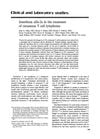 209 citations
,
March 1989 in “Journal of The American Academy of Dermatology”
209 citations
,
March 1989 in “Journal of The American Academy of Dermatology” Interferon alfa-2a is effective for treating cutaneous T cell lymphoma but has significant side effects.
 123 citations
,
September 1987 in “JAMA”
123 citations
,
September 1987 in “JAMA” IL-2 treatment causes skin eruptions and other reversible side effects, and may play a role in psoriasis.
 103 citations
,
December 2011 in “Journal of the American Academy of Dermatology”
103 citations
,
December 2011 in “Journal of the American Academy of Dermatology” Chemotherapy often causes temporary hair loss, which is distressing and needs better treatment and support.
 38 citations
,
September 2017 in “Oncologist”
38 citations
,
September 2017 in “Oncologist” Scalp cooling can help prevent chemotherapy-induced hair loss with a 50-90% success rate and is safe for patients.
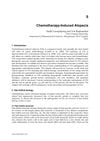 2 citations
,
January 2012 in “InTech eBooks”
2 citations
,
January 2012 in “InTech eBooks” Chemotherapy often causes hair loss, which usually grows back within 3 to 6 months, but there's no effective treatment to prevent it.
 55 citations
,
November 2004 in “Expert opinion on drug safety”
55 citations
,
November 2004 in “Expert opinion on drug safety” Chemotherapy often causes hair loss, nail changes, and mouth issues, but these are usually manageable.
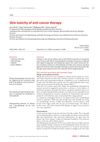 19 citations
,
October 2008 in “Journal der Deutschen Dermatologischen Gesellschaft”
19 citations
,
October 2008 in “Journal der Deutschen Dermatologischen Gesellschaft” Anti-cancer treatments can cause reversible hair loss, skin sensitivity, pigmentation changes, nail damage, and skin reactions, with a need for more research on managing these side effects.
